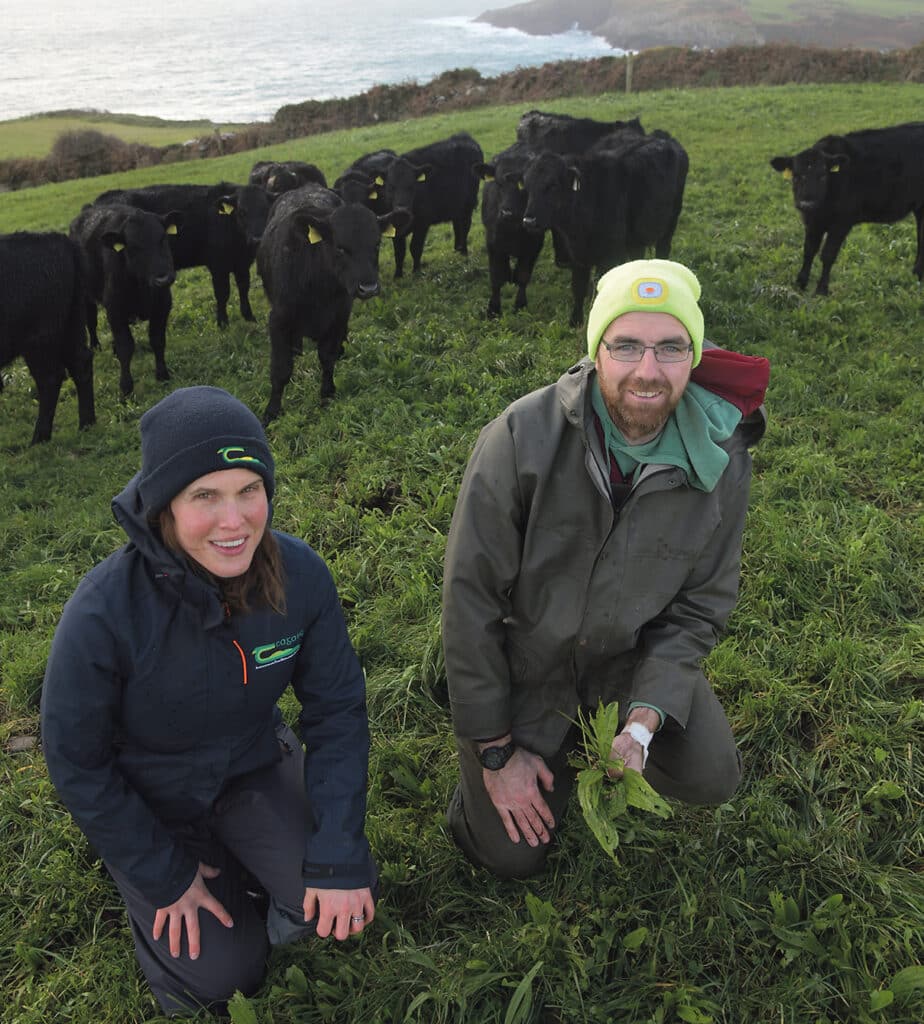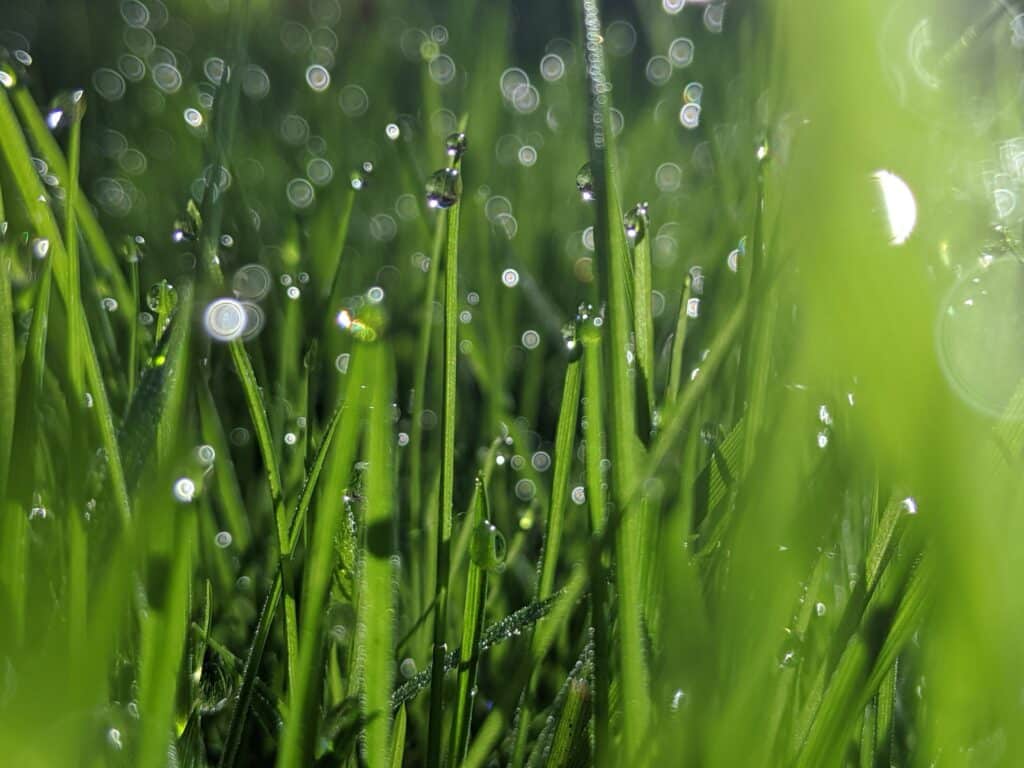
James and Rachel O’Sullivan with their four children, Kayla (12), Daire (10), Jenna (8) and Eoin (6) farm 31 hectares, which is divided into two blocks near Leap and Union Hall. There they run a dairy calf to beef system buying in calves in spring and finishing the cattle at 21 to 24 months.
The O’Sullivans have been participants in Teagasc’s DairyBeef500 programme since early 2022. Working with Teagasc advisor, Anna Sexton they have been steadily implementing changes that will increase the profitability on the farm.
Similar to many West Cork farmers, March has been a challenging month to manage. According to James: “We were doing fine till a few weeks ago. I have no big cattle, they’re all yearlings, so I’m not badly off. Half of them are out since end of January and the rest from early March. I’m limited enough on housing, so I needed the shed space for calves. The larger land block is almost on an island in a way so it’s very exposed but it’s good at this time of year as it’s fairly dry land. It can be more challenging from June onwards if weather gets very dry. The farm at home is north facing and is more sheltered. There’s 25 acres there and a shed. I do a bit of reseeding every year so if I need to hold cattle in a paddock, I try to have them in one that I’ve lined up for reseeding.”
Previously James purchased calves from local calf dealers and marts and while this worked well from a time point of view, it led to calves of varying quality and brought an element of disease risk too. So this year he changed his buying routine.
“This year I purchased them from four farmers. I work as an AI technician for Munster Bovine so I know a good few farmers and I can have a bit of input in the type of beef bull they are using so it’s a good tie up between us. This spring we bought in 91 Angus calves, an even enough mix of bulls and heifers and all bar two were born before March.”
Having the calves close in age will aid their weight uniformity and will benefit when it comes to housing, dosing and drafting for sale also. While he places an emphasis on early-maturing heifers, James finds it useful to have a mix.
“Some of the heifers will be ready for finishing by September so it’s handy to get them away. It reduces the demand for grass and I can keep the bullocks out a bit longer at grass. It’s good for cash flow too.”
Improving the carcass weight is one of the priority areas for James. Ideally, he would like a carcass of over 300kg at 21 months for steers and 275-280kg for heifers at 20-21 months. Focusing on early maturing breeds will help get the cattle finished before the expensive second winter.
“I examined some of the sires of the cattle I had slaughtered over the past number of years and found significant variability in the quality of bull used. Some of the carcass weights have been light so if we can add a few kilos to that without having an effect on calving difficulty for the dairy farmer, it should be win-win for both of us. This year, there’ll be a focus on using bulls with a higher Commercial Beef Value with a focus on their carcass weight index.”
Having a coastal land can be a benefit when it comes to having early grass but has its challenges when it could dry out and grass growth tails off in summer. To overcome this, James applied for the Multi Species Sward Scheme in 2022 and sowed 8ac of multi-species sward (MSS) between his home farm and his out-block. He ploughed the land in early summer and run with a disc harrow shortly after to break up the sod. The land was then levelled and run with a harrow to create a nice fine seed bed and then seeded and rolled. The only spray the land received was glyphosate prior to ploughing and it received two bags of 10-10-20 at sowing. “Growth was excellent once the sward became established. This was particularly noticeable in the dry period in late summer and early autumn, when the MSS outperformed grass swards on the farm without the need for any chemical fertiliser applications.”
James saw a good level of performance, enough to encourage him to try another few paddocks in future. “What I want to establish is how the swards will persist next year, particularly if there is any level of poaching on the sward, which can be quite open early in the year.”
While James will be incorporating various technologies on-farm, including CBV to purchase better calves of a higher beef merit and reseeding with MSS to reduce reliance on chemical nitrogen and help with drought periods, the overall plan of the farm remains the same, finishing cattle from a largely grass-based system at 20-21 months of age.



